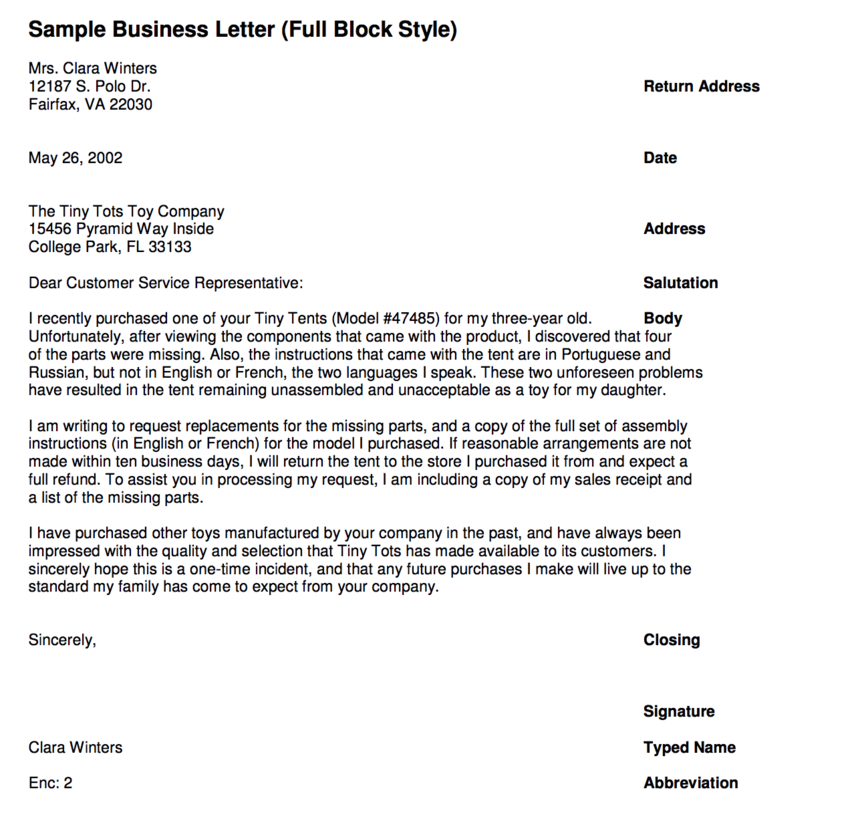Writing Business Letters
A good business letter is brief, straightforward, and polite. If possible, it should be limited to one single-spaced typewritten page. Because it is so brief, a business letter is often judged on small, but important, things: format, grammar, punctuation, openings and closings. A business letter is not the place to try out fancy fonts or experimental writing styles.
Two Main Styles
-
Full block style: Align all elements on the left margin.
-
Modified block style: Down the middle of the page, align the return address, date, closing, signature, and typed name; align other elements on the left page margin.
Elements of a Standard Business Letter
-
Return Address: Your address (or the address of the company you represent). If you are using preprinted stationery, there is no need to retype the information.
-
Date: Leave two blank lines after the return address. Always spell out the month and include the day, a comma, and the year.
-
Inside Address: Leave two blank lines after the date. Then type the address of the person or company to whom you are writing.
-
Salutation: Type Dear, followed by the person’s name. End the line with a colon. If you don’t know the name of the person, use a title instead (i.e., Dear Editor, Dear Madam).
-
Body: Align your message on the left margin. Skip a line before starting a new paragraph, but do not indent the paragraph’s first line. Make sure that each paragraph is clear and concise.
-
Closing: Leave two lines of space after your last body paragraph, then use a conventional closing, followed by a comma (i.e., Sincerely, Sincerely Yours, Respectfully).
-
Signature: Your signature should appear below your closing. Unless you have established a personal relationship with the person you are writing, use both your first and last name.
-
Name and Position: Four lines after the closing, type your full name. Do not include a title (Mr. or Mrs.). If you are writing on behalf of an organization, type your title on the next line.
-
Abbreviations at the end of a letter: If you send a copy of a letter to someone other than the person addressed, use cc: and the person’s name. Use Enc. or Enclosure if you enclose something with the letter. If someone else types it, put the writer’s initials in capitals, then a slash and the typist’s initials in lowercase: MT/fjr. Just one abbreviation should appear on a line.
